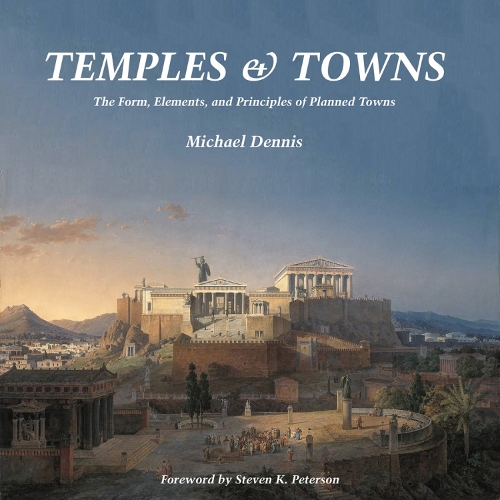
Temples and Towns: The Form, Elements, and Principles of Planned Towns
(Paperback)
Publishing Details
Temples and Towns: The Form, Elements, and Principles of Planned Towns
By (Author) Michael Dennis
Oro Editions
Goff Books
27th October 2022
United States
Classifications
General
Non Fiction
History of architecture
Landscape architecture and design
307.1216
Physical Properties
Paperback
504
Width 266mm, Height 266mm
2434g
Description
This book traces the historic evolution of urban form, principles, and design; it serves as a compendium, or reference, of city design; and is a polemic about the necessity for the recovery of the city and a contemporary urban architecture.
It begins with the planned cities of Greece and the Roman Empire from about 500 BC, through the late-medieval Bastides, the Ideal Renaissance cities, and Baroque new towns, to the urban planning strategies of the nineteenth and early twentieth centuries. It covers anti-urban modernist architecture and the resulting disintegration of the city. It concludes with late-twentieth-century efforts to recover the city, a contemporary urban architecture, and urbanisms potential contribution to the contemporary ecological crisis.
The book is project oriented and extensively illustrated. It may be read graphically, textually, or both. As such, it falls into the long tradition of illustrated treatises in which theory is embedded in the projects, with only occasional assistance or clarification from the text. Architecture and urban design are physical arts, not verbal arts, and they are best understood from graphic representations.
Reviews
"In this long overdue extension of Michael Dennis's 1986 book Court & Garden: From the French Htel to the City of Modern Architecture, the thoughtful architect and educator turns his attention to town planning. The copious illustrations alone are worth the price and render this a must-have for any architect or urban designer's library." --ARCHITECT, The Journal of the American Institute of Architects
Author Bio
Michael Dennis is an architect, author, and educator. He is Professor of Architecture Emeritus at MIT. He was the Thomas Jefferson Professor of Architecture at the University of Virginia, and the recipient of the CNU Athena Medal for contributions to urbanism.
Other contributors Steven K. Peterson, Foreword
